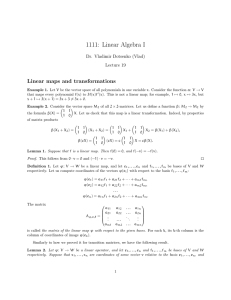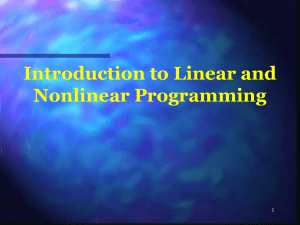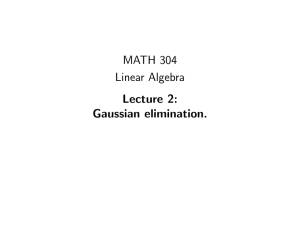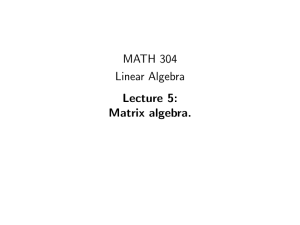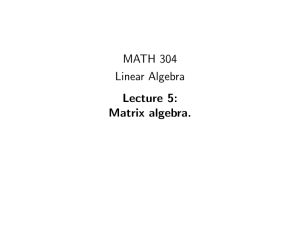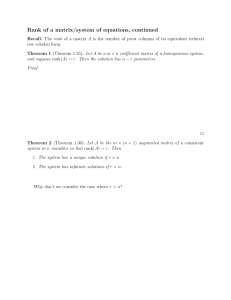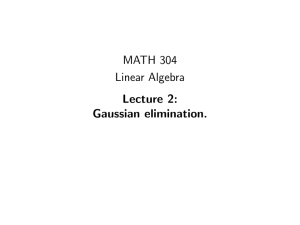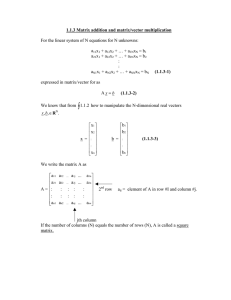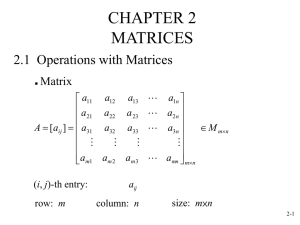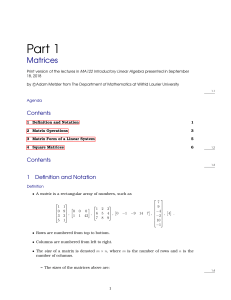Chapter 9: Linear Algebra and Analytic Geometry
advertisement
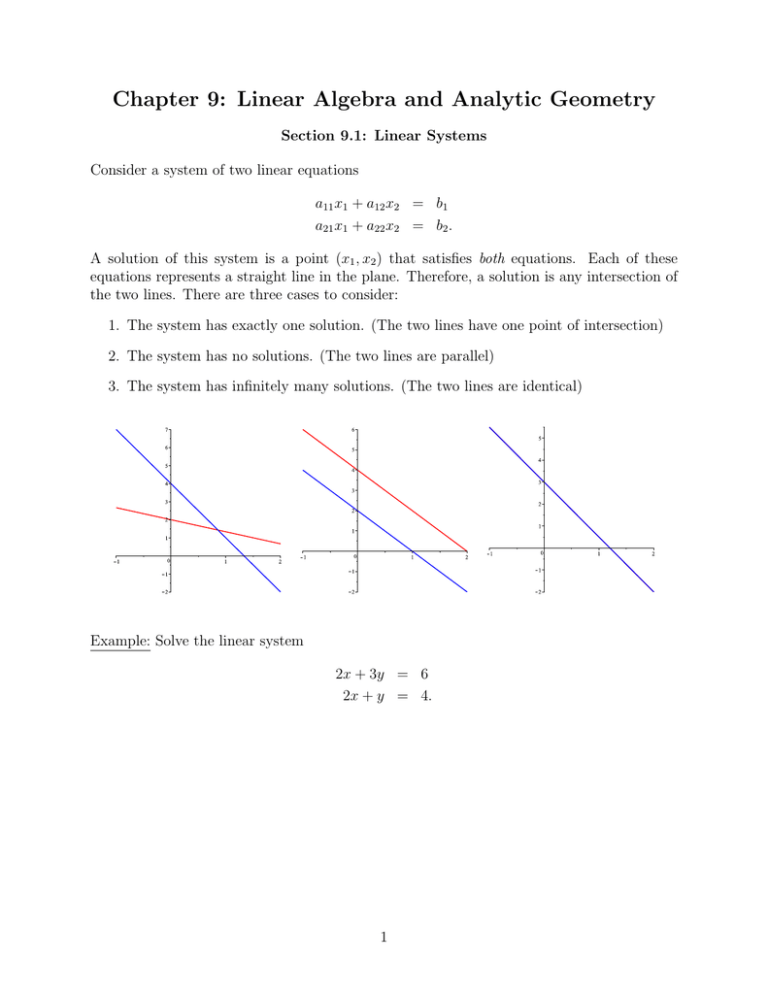
Chapter 9: Linear Algebra and Analytic Geometry Section 9.1: Linear Systems Consider a system of two linear equations a11 x1 + a12 x2 = b1 a21 x1 + a22 x2 = b2 . A solution of this system is a point (x1 , x2 ) that satisfies both equations. Each of these equations represents a straight line in the plane. Therefore, a solution is any intersection of the two lines. There are three cases to consider: 1. The system has exactly one solution. (The two lines have one point of intersection) 2. The system has no solutions. (The two lines are parallel) 3. The system has infinitely many solutions. (The two lines are identical) Example: Solve the linear system 2x + 3y = 6 2x + y = 4. 1 Example: Solve the linear system 2x + y = 4 4x + 2y = 6. Example: Solve the linear system 2x + y = 4 6x + 3y = 12. 2 Consider a system of m linear equations in n variables a11 x1 + a12 x2 + · · · + a1n xn = b1 a21 x1 + a22 x2 + · · · + a2n xn = b2 .. . am1 x1 + am2 x2 + · · · + amn xn = bm . The variables are x1 , x2 , . . . xn and the coefficients are aij , 1 ≤ i ≤ m, 1 ≤ j ≤ n. The system can be solved by transforming it into a simpler system that has the same solutions. Systems of linear equations that have the same solutions are called equivalent. To transform a linear system into an equivalent system, we use three basic operations: 1. Multiplying an equation by a nonzero constant. 2. Adding one equation to another. 3. Rearranging the order of the equations. This process is known as Gaussian elimination. Example: Solve the linear system 2x − 3y + z = −1 x + y − 2z = −3 3x − 2y + z = 2. 3 Example: Solve the linear system x + 4y − 3z = −13 2x − 3y + 5z = 18 3x + y − 2z = 1. Example: Solve the linear system 2x − y + 3z = 3 2x + y + 4z = 4 2x − 3y + 2z = 2. 4 Definition: A matrix is a rectangular array of numbers: a11 a12 · · · a1n a21 a22 · · · a2n A = .. .. .. ... . . . am1 am2 · · · amn The elements aij of the matrix A are called entries. A matrix with m rows and n columns is called an m × n matrix. Consider a system of m linear equations in n variables a11 x1 + a12 x2 + · · · + a1n xn = b1 a21 x1 + a22 x2 + · · · + a2n xn = b2 .. . am1 x1 + am2 x2 + · · · + amn xn = bm . This system can be expressed as an augmented matrix a11 a12 · · · a1n b1 a21 a22 · · · a2n b2 .. .. .. .. .. . . . . . am1 am2 · · · amn bn . The linear system can be solved by performing Gaussian elimination on the rows of the augmented matrix. Example: Solve the linear system −x − 2y + 3z = −9 2x + y − z = 5 4x − 3y + 5z = −9. 5 Example: Solve the linear system 2x + 3y + z = 1 x+y+z = 3 3x + 4y + 2z = 4. Example: Solve the linear system 3x + 2y − z = 4 x − 2y + 2z = 1 11x + 2y + z = 14. 6 Definition: A linear system is called underdetermined if it has fewer equations than variables. Similarly, a system is overdetermined if it has more equations than variables. Example: Solve the underdetermined system x+y+z = 3 x − y = 2. Example: Solve the overdetermined system 4x − 3y = 6 2x + y = 1 x + y = 1. 7 Example: Solve the underdetermined system 2x − 2y + 4z = 6 −x + y − 2z = −3. Example: Solve the overdetermined system 3x + y = 1 x−y = 0 4x = 1. 8

